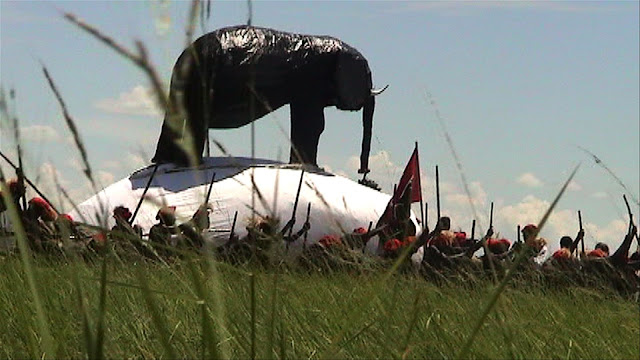Kuomboka and Kufuluhela, Lozi Flood Ceremonies, Barotseland
 | |
| The Kings Royal Barge, the Nalikwanda (For the People), Barotse Flood Plain, Barotseland |
Kuomboka and Kufuluhela have both been described as many things but I like to call them mass migration spectacles, a floating symphonic exodus, performances of spiritual renewal of faith in the role of the Litungaship in the entire Kingdom north and south, east and west of the flooded plain.
These ceremonies are both born out of ecological necessity and both over time have become grand texts, myths and unifying performance practices of the Lozi of southern Africa. Kuomboka and Kufuluhela as cultural practices were fully explored by Mutumba Mainga in her article A History of Lozi Religion (1972) and Likando Kalaluka (1979) in Kuomboka: A Living Traditional Culture among the Malozi people of Zambia (neczam). This seminal work covers the cosmology, cultural history, ecology, and explores the political and economic basis for Kuomboka and Kufuluhela.
There are three different Kuomboka and Kufuluhela locations and ceremonies with all their own royal barges, xylophone orchestras and separate pageantry at Nalolo, Libonda and Lialui. These six grand migrations and many other ceremonies in Barotseland give us an enormous repository of cultural information and act as the central unifying grand narratives for the people.
Kuomboka and all of its cultural properties - music, dance, masquerade and more has ancient nilotic roots and we hear them spoken of in the oral epics of the praise singers to the King. They tell us how over time they have become ceremonies of cultural unity and opportunities for collective consciousness - where we "wade in the water" with our King as he leads us to higher ground physically and spiritually and then brings us back down to the land of plenty.
Mukwae Wabei Siyolwe 2010

Comments
Post a Comment